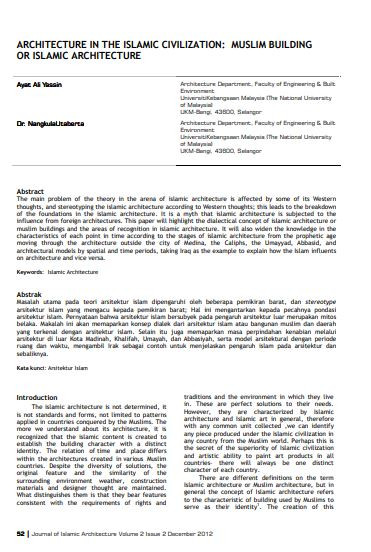
The main problem of the theory in the arena of islamic architecture is affected by some of its Western thoughts, and stereotyping the islamic architecture according to Western thoughts; this leads to the breakdown of the foundations in the islamic architecture. It is a myth that islamic architecture is subjected to the influence from foreign architectures. This paper will highlight the dialectical concept of islamic architecture or muslim buildings and the areas of recognition in islamic architecture. It will also widen the knowledge in the characteristics of each point in time according to the stages of islamic architecture from the prophetic age moving through the architecture outside the city of Medina, the Caliphs, the Umayyad, Abbasid, and architectural models by spatial and time periods, taking Iraq as the example to explain how the Islam influents on architecture and vice versa.
I agree to the terms outlined below:
You agree to upload and assign Mosqpedia Database the rights to use the content worldwide and in perpetuity across all current and future media platforms. Mosqpedia Database may edit, copy, adapt and translate your contribution.
The content will be distributed under the Creative Commons Attribution-Deed – Attribution-NonCommercial-NoDerivatives 4.0 International – Creative Commons
All data will be stored in line with data protection regulations.